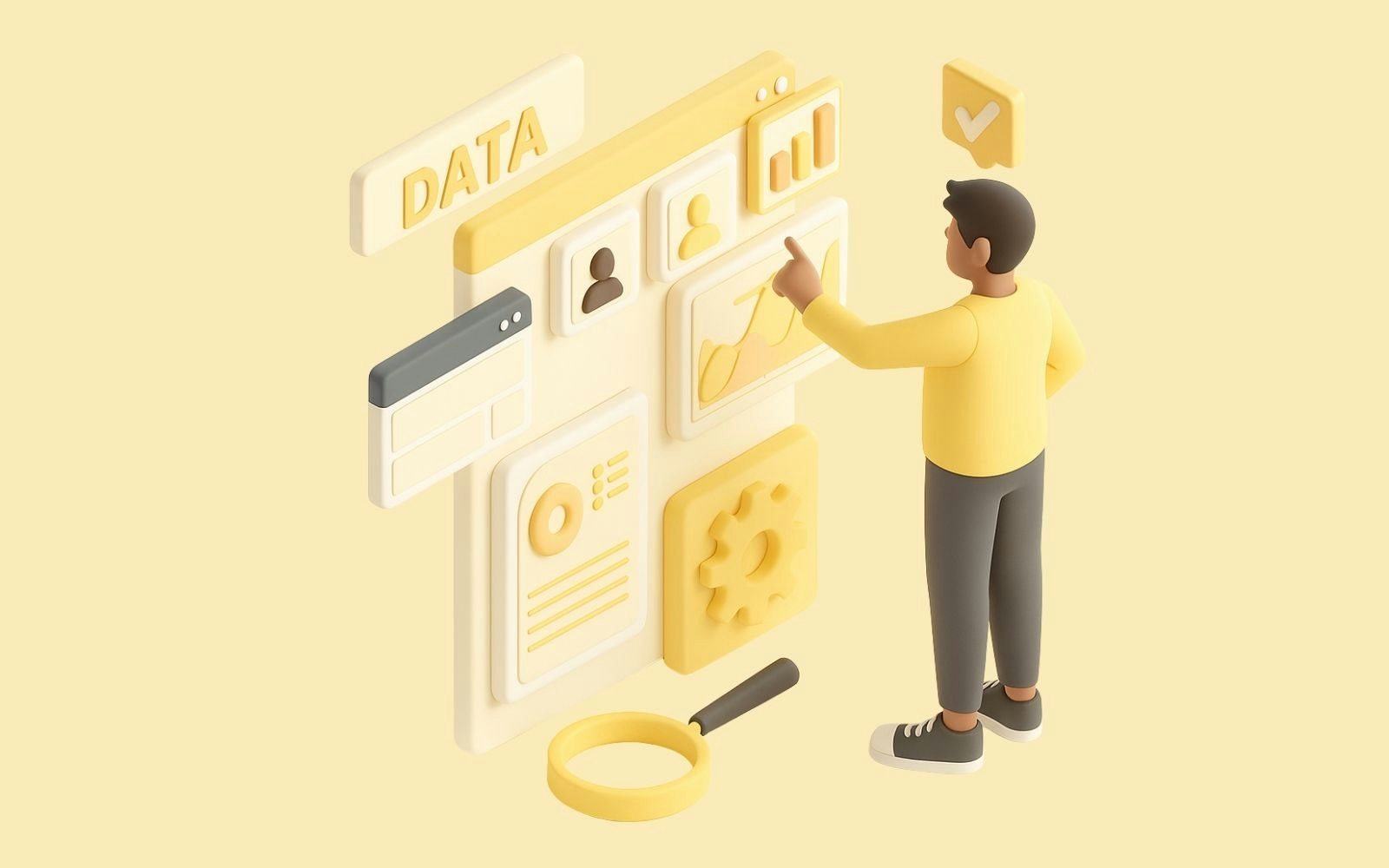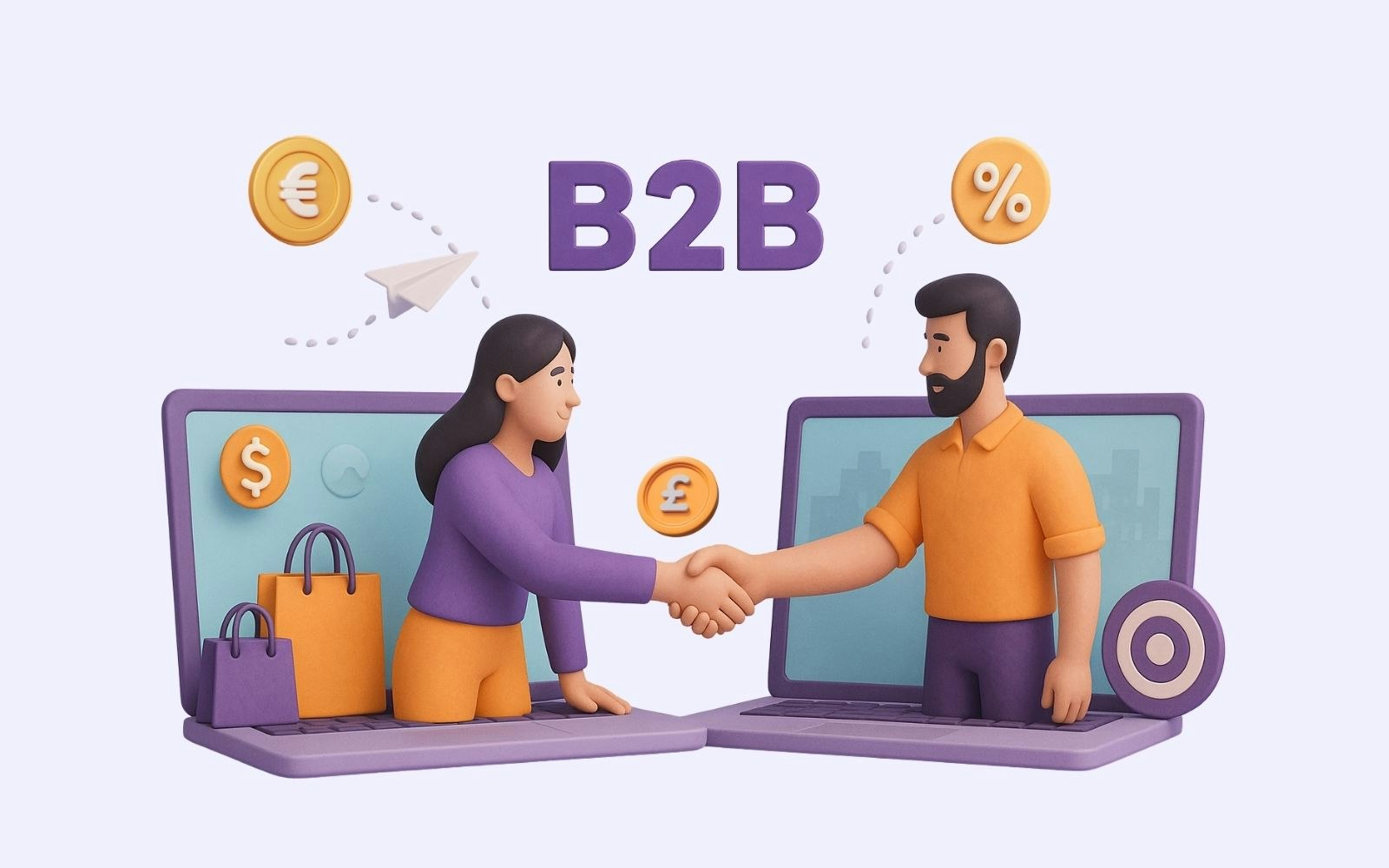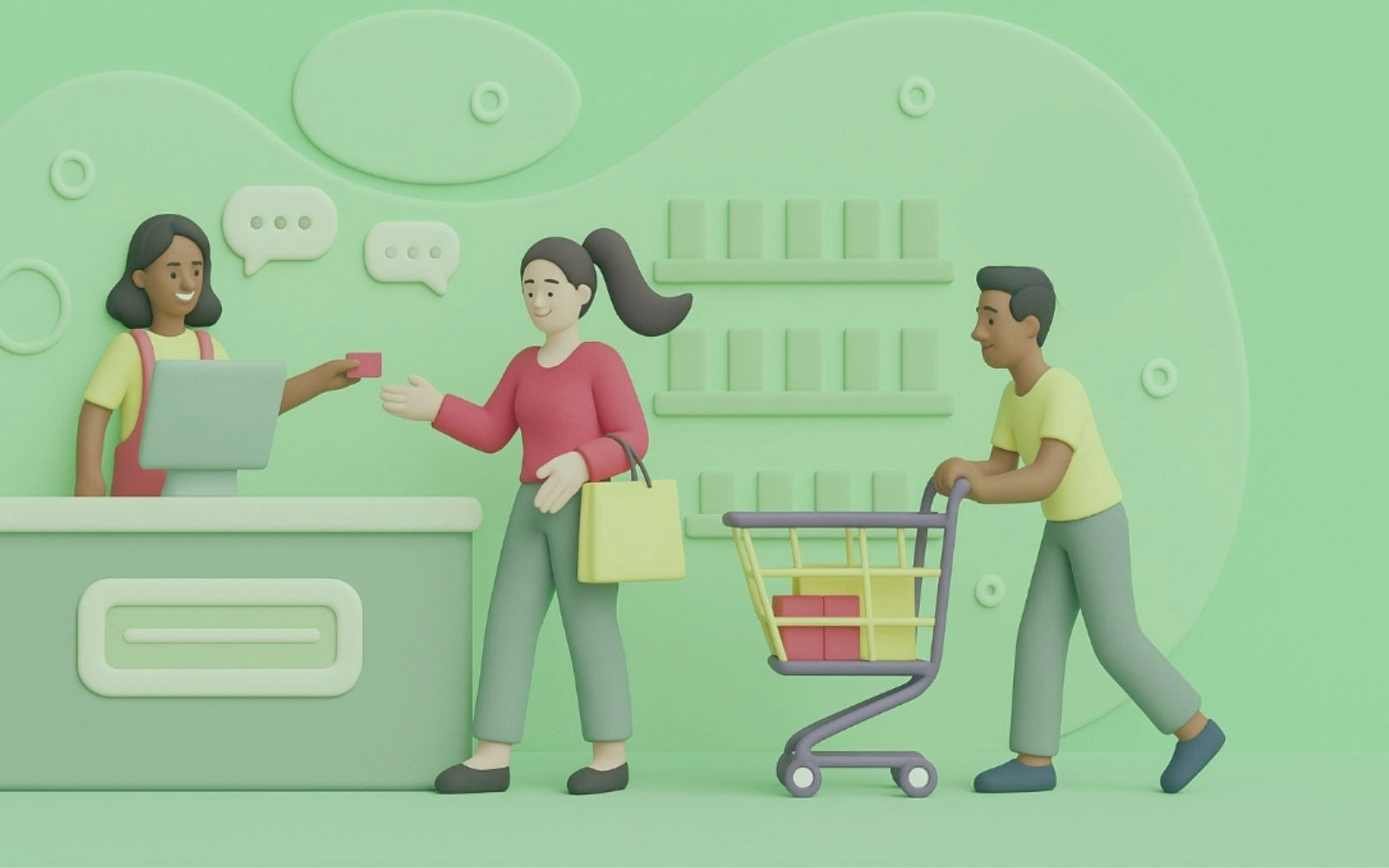
Why retailers are adopting a CDP
7min • Last updated on Nov 14, 2025

Olivier Renard
Content & SEO Manager
[👉 Summarise this article using ChatGPT, Google AI or Perplexity.]
Nearly one in three consumers abandons a brand they like after just one bad experience (PwC). On the other hand, 75% of satisfied customers say they are willing to spend more (Zendesk). They also tend to be more loyal to the brand and more inclined to share their information.
Retail has undergone a profound transformation, shifting from the isolated physical store to an omnichannel and data-driven model. Customer knowledge and personalised experience have become major drivers of competitiveness.
With the explosion of touchpoints, purchasing journeys have become more complex, mixing digital interactions and in-store visits. The challenge for businesses is to unify these scattered data in order to better understand and serve their customers.
Key Takeaways:
A Customer Data Platform (CDP) is perfectly suited to the needs of retail. It unifies all customer data from e-commerce sites, physical stores, social media, and more.
It enables personalised experiences at scale by leveraging artificial intelligence, thus improving customer retention.
Retail use cases for a CDP are numerous — from customer acquisition and cart abandonment to promotional offers and in-store interactions.
Composable solutions offer greater flexibility, improved governance, and lower costs compared to traditional packaged CDPs.
🔎 Discover why CDPs are being widely adopted by retailers. What are the main B2C use cases and best practices to improve performance? 🚀
What does a CDP applied to retail involve?
A Customer Data Platform is a solution that centralises all customer data of a company to create a unified and actionable view. It gathers information from various sources: e-commerce websites, mobile apps, social media, advertising campaigns, in-store purchases, and loyalty programmes.
This approach is particularly relevant in retail. This sector has always relied on a direct connection with end customers, encompassing various formats: small businesses, supermarkets, premium brands, and digital pure players.
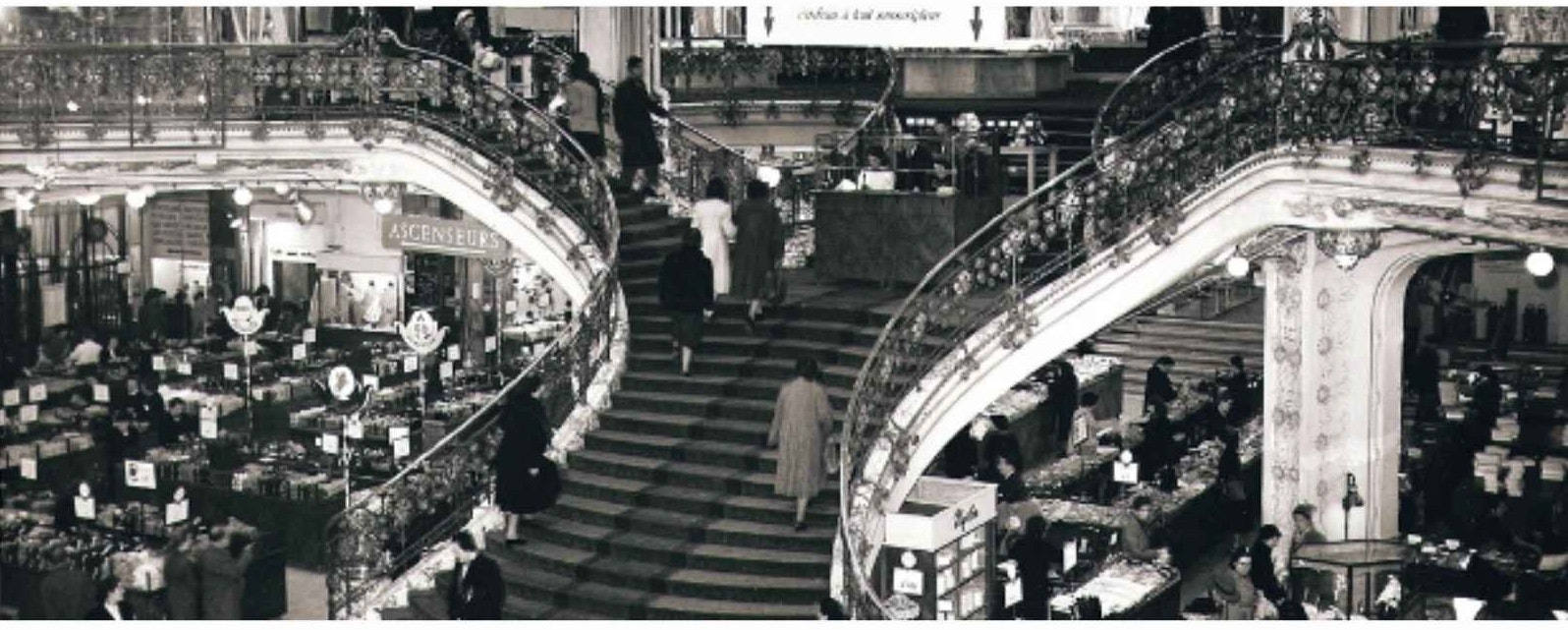
Founded in 1893, Galeries Lafayette is one of Paris's most iconic department stores (credit: Galeries Lafayette).
Historically, the goal was to offload stock and preserve margins. But times have changed. The rise of e-commerce, the growth of loyalty programmes, and the proliferation of touchpoints have made shopping journeys more complex.
Brands now need to interact with a multitude of customers, each with different expectations. At the same time, they must offer a seamless, personalised, and consistent experience across all channels to stay competitive.
The CDP emerges as a strategic tool to unify data, better understand behaviour, and innovate without losing the brand's DNA.
CDP vs CRM and other marketing tools
The CDP and CRM are two different solutions, both in their operation and in their use cases. As the name suggests, a CRM manages customer relationships: storing contacts, declared data, task automation, and reporting.
A CDP collects real-time data from all channels — web, stores, apps, email, SMS, etc. Thanks to the identity resolution process, it unifies this data to make it actionable by marketing, sales, support, or data teams.
CDPs also differ from DMPs, which mainly rely on third-party cookies for advertising targeting.
In contrast, CDPs leverage first-party data for long-term strategies: transactions, loyalty profiles, and browsing behaviour. As third-party cookies disappear, they represent a strategic asset for retailers looking to maintain an authentic connection with their audience.
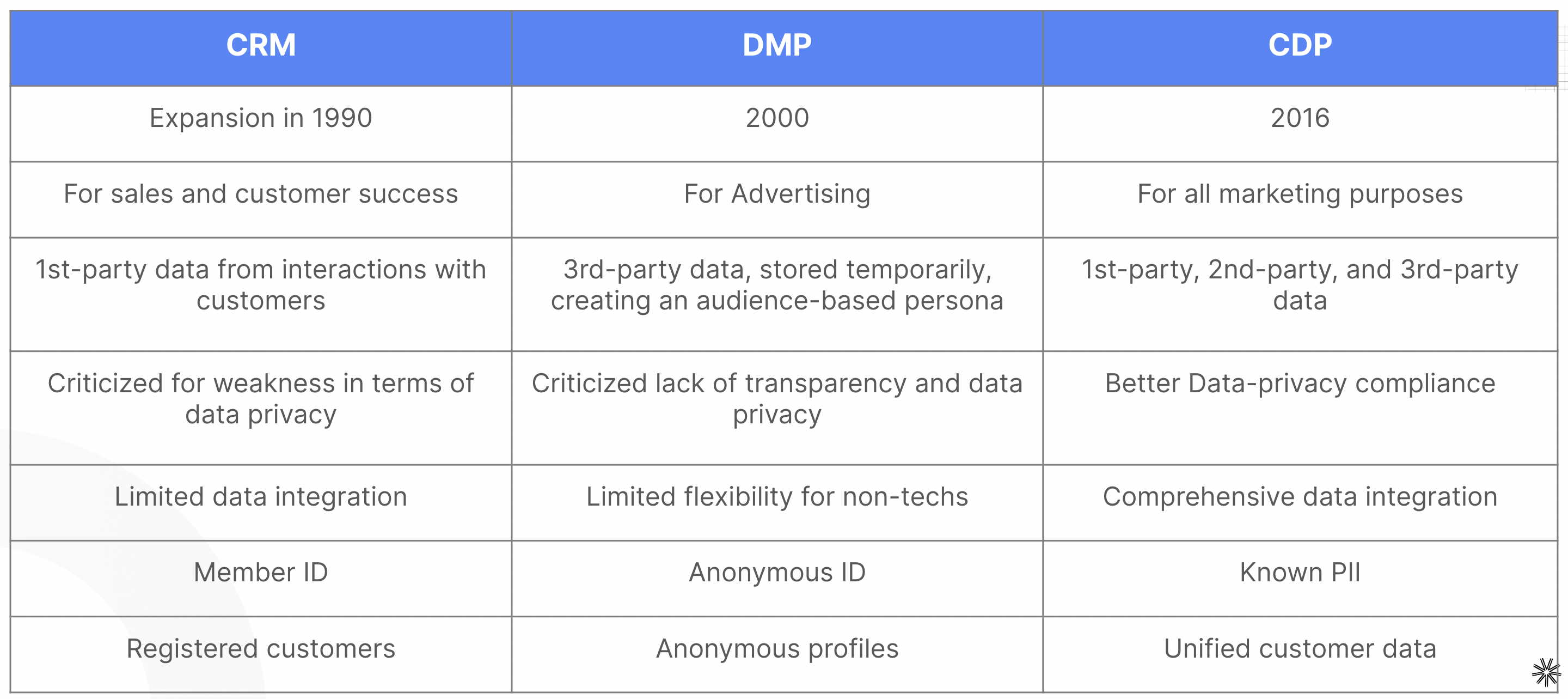
CRM vs CDP vs DMP
💡 A classic CRM campaign is still too often limited to sending a generic newsletter to a contact base. A CDP tailored to retail needs allows for the creation of dynamic omnichannel journeys.
To re-engage a customer who has abandoned a cart online, for example, you could offer a personalised deal in their mobile app, followed by a coupon redeemable in-store.
The benefits of a CDP for retailers
Build a unified customer view
A CDP gathers all available information to create a unified customer view, also known as Customer 360. Marketing and sales teams then have a reliable base to understand each customer and adapt their approach.
For instance, an online-identified buyer can be personally welcomed when visiting a physical store. Their purchase history, preferences, and past interactions are all centralised into a single profile.
Personalise the customer experience at scale
Consumers expect offers and services that are tailored to their needs — but retailers can have millions of contacts in their databases! A CDP enables personalisation at scale.
It supports product recommendations (Next Best Offer), targeted promotions, and tailored journeys based on each customer's profile. The goal is to offer more relevant experiences, boosting satisfaction and loyalty.
The DinMo composable CDP includes AI decisioning capabilities. This makes it possible to trigger the best action in real time — whether it’s suggesting an offer or choosing the most effective channel.
Campaign optimisation and ROI improvement
Marketing investments are costly, with the average CPC rising by more than 12% this year (WordStream). A CDP helps optimise actions to boost conversion and thus improve return on investment.
The tool avoids redundancies, simplifies the creation of exclusion lists, and helps distribute budgets across the most effective channels. AI helps determine the best individual scenario: re-engage an abandoned cart, offer an upsell, or prioritise in-store contact.
GDPR compliance and data governance
In a strict regulatory environment, managing personal data is a top priority. Like any organisation, retailers must comply with the GDPR and ensure that every interaction is based on clear consent.
You must choose a solution that guarantees both strong security and governance. A composable CDP addresses these issues by leveraging a zero-copy infrastructure, centralising first-party data in the company’s data warehouse, and rigorously managing access rights.
This allows brands to build trusting relationships while securing their marketing operations.
Main use cases
1️⃣ Acquisition & retail media
A CDP allows you to create precise segments and generate lookalike audiences to improve advertising performance. For large retailers, it also simplifies data monetisation through retail media.
💡 Galeries Lafayette activates over 150 audiences daily and reduced their CPC by 28% thanks to DinMo. Meanwhile, Brandalley excluded high-value clients from brand search campaigns.
These customers already visited the site organically, so there was no need to target them with paid ads. This optimisation led the famous British flash sales site to achieve an 89% increase in organic traffic and save 5% on its advertising budget.
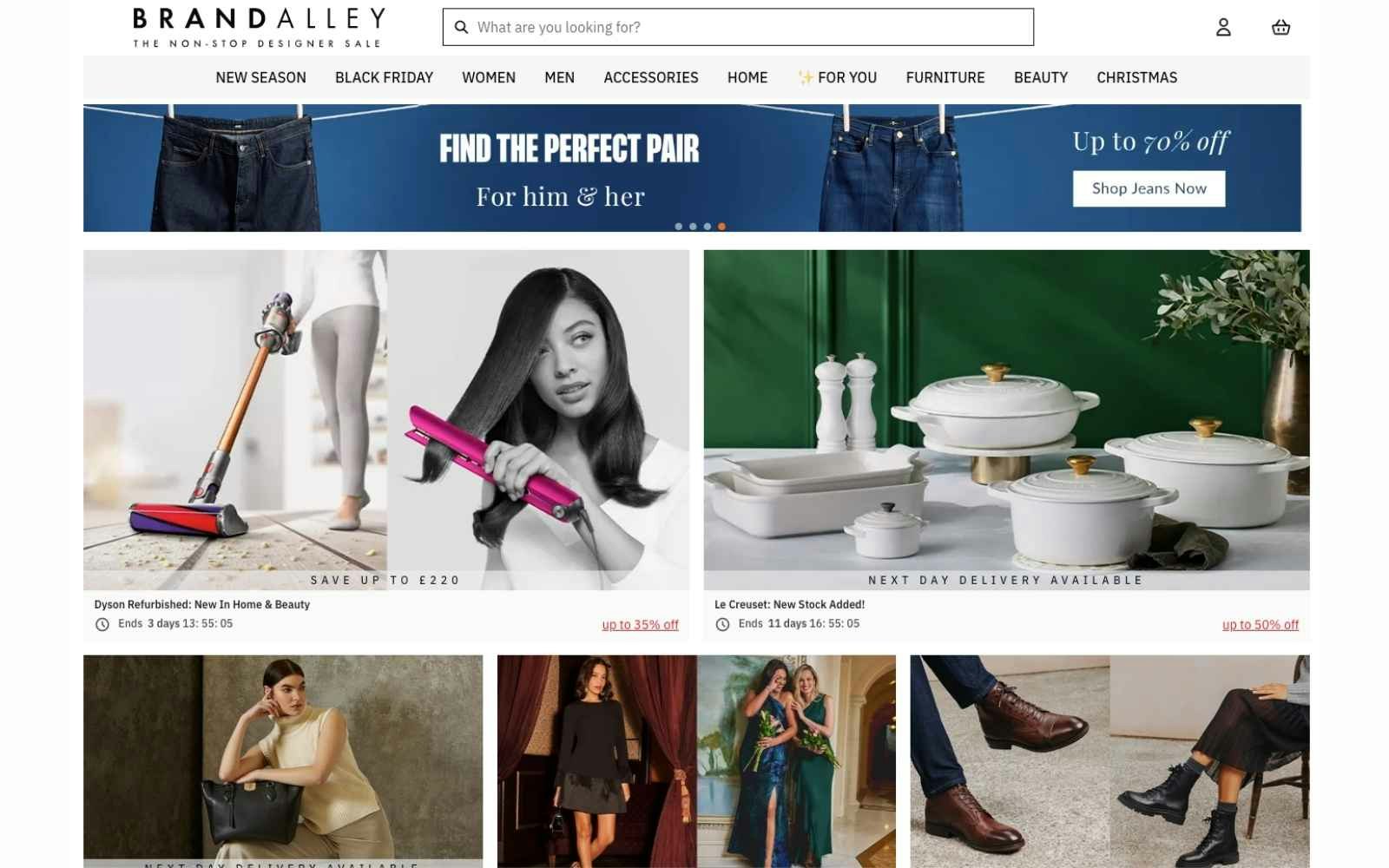
Brandalley website homepage
2️⃣ Omnichannel conversion
Every interaction matters: a customer facing difficulty online or in-store may give up their purchase. The CDP helps avoid friction through tailored scenarios: abandoned cart recovery, click-and-collect reservations, or store welcome messages.
💡 Our client Interflora orchestrates follow-ups through multiple channels using data stored in its warehouse. With this automated marketing scenario, the flower delivery leader has seen a +7.6% increase in sales on abandoned carts.
3️⃣ Loyalty and retention
Acquiring a new customer can cost up to 16 times more than retaining one (MIT). A satisfied customer buys more often, spends more, and becomes your best ambassador.
A company’s growth relies on its ability to retain existing customers. A CDP enhances loyalty programmes, detects churn risks, calculates Lifetime Value (LTV), and feeds re-engagement campaigns.
💡 Kappa adopted DinMo in 2024. After integrating sales data and refining segmentation, the sports brand increased revenue by 20% while maintaining a stable Marketing Efficiency Ratio (MER).
4️⃣ Phygital experience
Brands now face the challenge of bridging the gap between physical and digital to provide a seamless omnichannel experience. Decathlon is digitalising its stores, Sephora is personalising beauty experiences, and Nike is connecting apps to physical locations.
A CDP supports this phygital approach by unifying data from all channels to meet the needs of business teams.
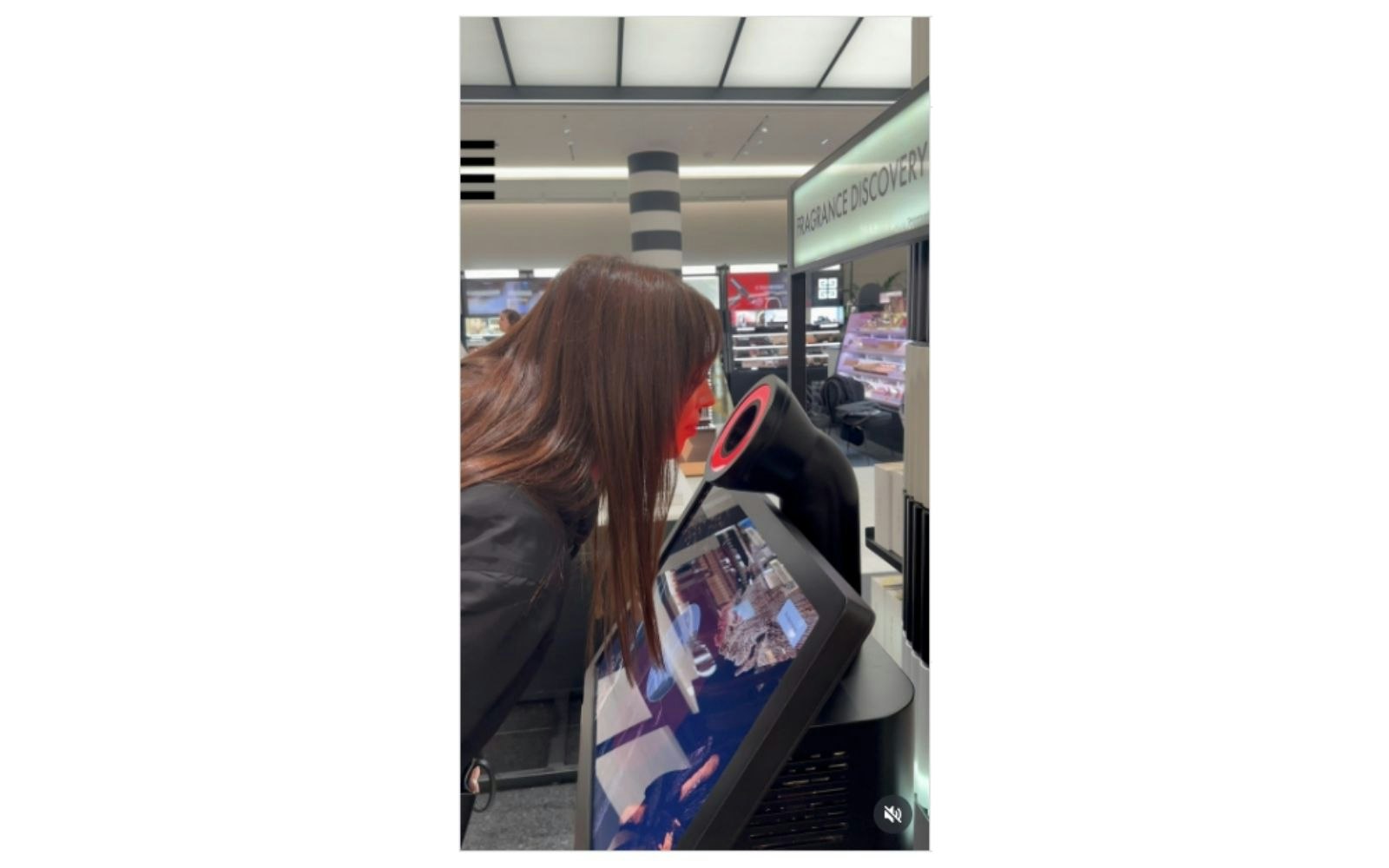
Sephora fragrance discovery (credit: Instagram Sephora)
5️⃣ Other cross-functional use cases
A CDP also helps fine-tune promotional campaigns. Beyond marketing, it improves customer support (by providing a complete view of interactions) and product teams (by analysing behaviours to guide innovation).
Challenges faced by retailers
Data quality and reliability
Customer data comes from multiple sources: e-commerce, loyalty programmes, stores, ad campaigns. Avoiding duplicates and inconsistencies requires precise tracking and a reliable technical foundation.
Integration with existing systems
Retailers rely on many tools: CRM, ERP, POS systems. The CDP must integrate without creating additional silos or duplications.
High volume and latency during peak periods
During sales, Black Friday, or Christmas, transaction volumes explode. The CDP must ingest and activate data in real-time without slowing campaigns or degrading the customer experience.
Agility and adaptation to new digital channels
While e-commerce accounts for around 20% of sales on average depending on the country, two-thirds of purchases are influenced by digital. Retailers must remain agile in the face of emerging channels like TikTok Shop and the rise of the D2C model.
A CDP enables them to adapt their strategies and maintain control over the customer relationship.
Internal adoption by teams
A CDP should not remain in the hands of a few experts. Its value depends on adoption by business teams through a simple and accessible interface.
Regulatory compliance
Regulations like GDPR (Europe) or CCPA (California) require rigorous data management. A modular approach helps by relying on the company’s data warehouse — with no duplication.
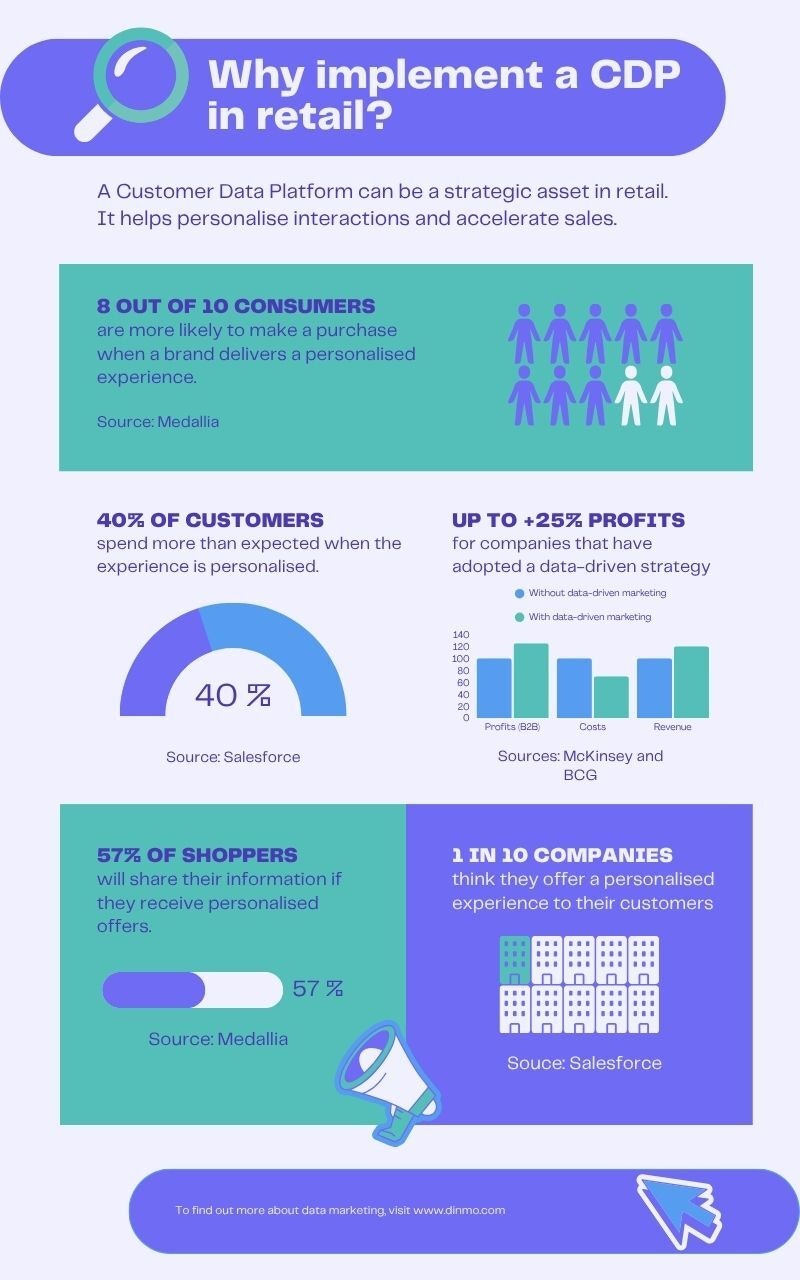
Why implement a CDP in retail?
How to succeed with a CDP project in retail
Clarify your objectives: customer acquisition, retention, media optimisation, retail media. This step sets a clear direction and maximises success.
Choose the right architecture: packaged CDPs may seem convenient but are often more costly and rigid. A composable CDP offers greater flexibility and can be deployed in just a few hours.
Involve marketing and data teams from the start: success depends on collaboration between business users and technical experts.
Measure results and iterate: tracking KPIs such as CAC, LTV, MER, or retention rate helps refine campaigns and maximise ROI.
Conclusion
A Customer Data Platform is a strategic asset for retailers. It unifies data from all channels, offers personalisation at scale, and improves campaign ROI.
The composable CDP model enables brands to leverage data from their data warehouse — without duplication. Simpler, more flexible, and cost-effective, it offers an approach perfectly suited to the sector’s needs.
👉 Discover how DinMo helps retailers unify and activate their customer data!
FAQ
Packaged or composable CDP: which approach is best for retail?
Packaged or composable CDP: which approach is best for retail?
A traditional (or packaged) CDP offers an all-in-one solution but tends to be expensive and rigid. A composable CDP builds on your existing data warehouse without duplication. It's more flexible, faster to deploy, and cost-effective for retailers looking to scale with their tech stack.
How does a CDP improve customer loyalty?
How does a CDP improve customer loyalty?
By unifying data and identifying engagement signals, a CDP helps create targeted campaigns such as win-back, rewards, or reactivation. Each interaction becomes more relevant.
The insights generated help strengthen satisfaction, retention, and increase Customer Lifetime Value (LTV, or CLV).
How does a CDP enhance in-store personalisation?
How does a CDP enhance in-store personalisation?
A CDP connects online and offline data to deliver a seamless experience. Store staff gain a 360° customer view and can offer tailored promotions, product advice, or loyalty rewards directly in-store via app or kiosk.
How much does a Customer Data Platform cost for a retailer?
How much does a Customer Data Platform cost for a retailer?
Pricing depends on data volume, number of users, and the model selected. A composable CDP is usually more affordable: no data duplication, quick integration, and a measurable ROI from the first marketing use cases.
Is a Customer Data Platform only for large retail chains?
Is a Customer Data Platform only for large retail chains?
Not necessarily. Modern CDPs are suitable for businesses of all sizes.
Composable solutions enable retailers to centralise their customer data and launch personalised campaigns without a complex infrastructure or dedicated technical team. CDPs typically deliver valuable insights starting from 50,000 contacts.

















